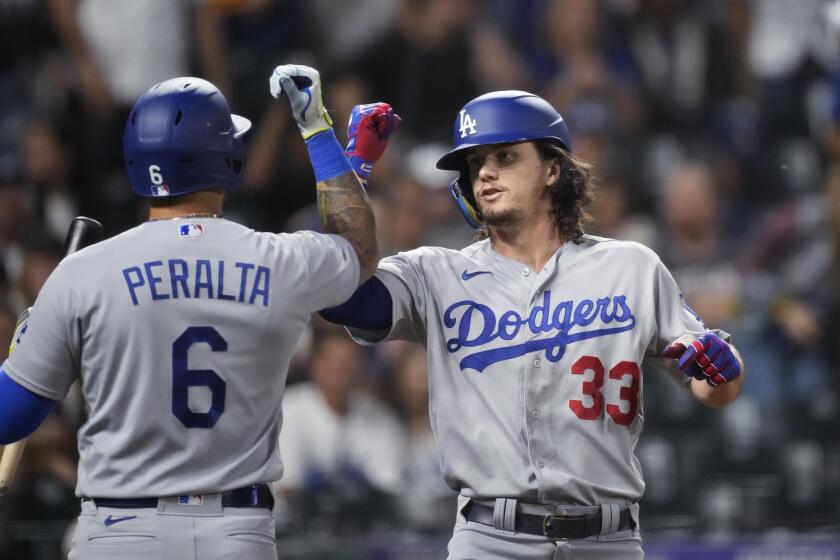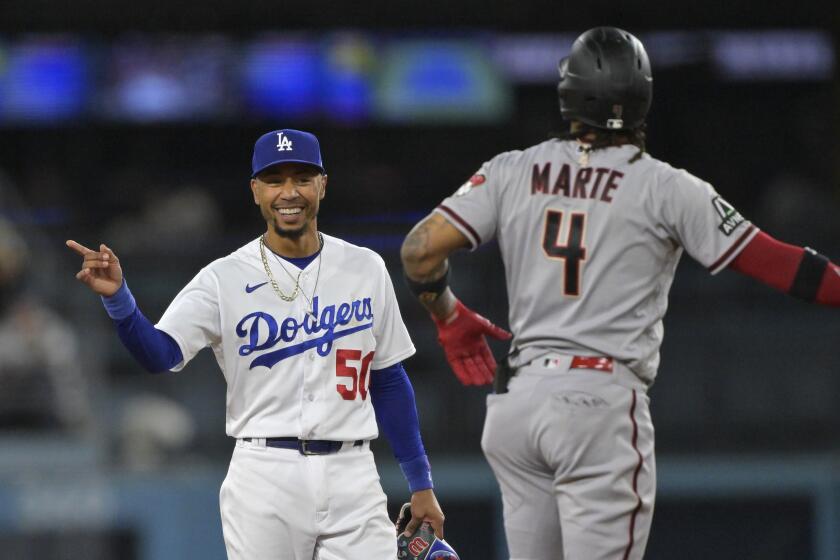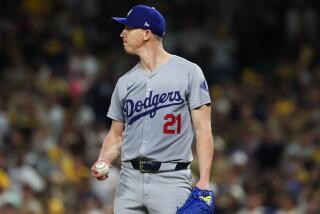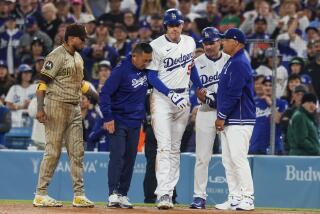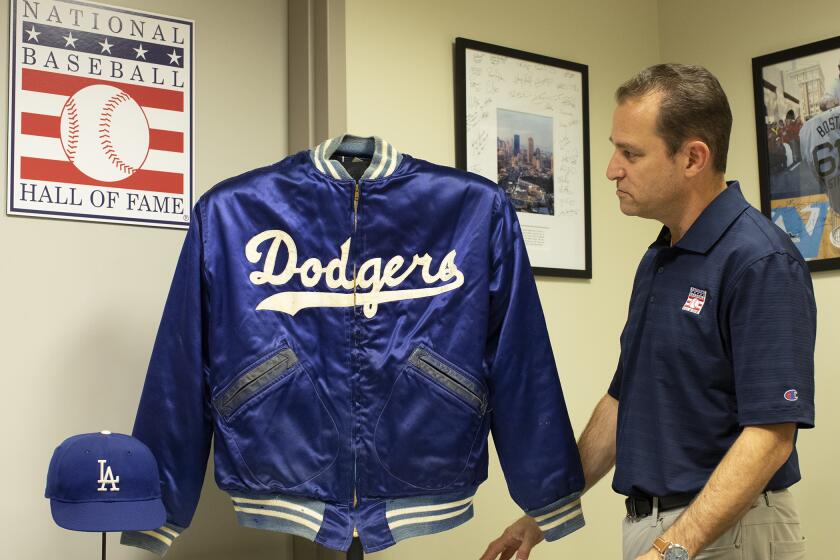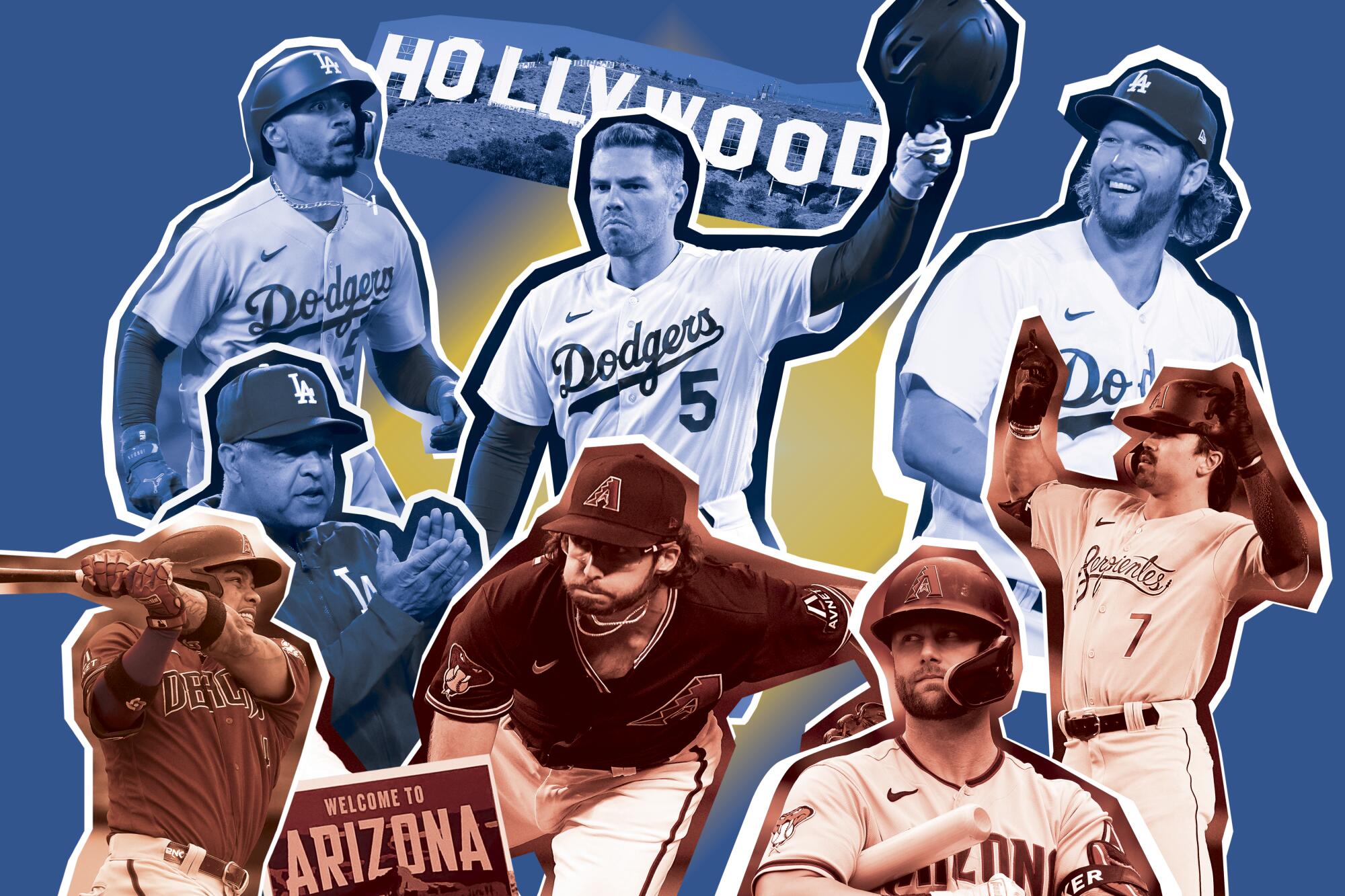
- Share via
Eighteen outs.
It’s a magic number, a mathematical dilemma and almost certainly the Dodgers’ biggest obstacle this October.
For a team that is short on pitching, lacking a clear playoff rotation and facing an uncertain road to another World Series bid, no task will be as important this postseason as navigating the first six innings of every game — getting an all-important 18 opening outs.
Usually, it isn’t a difficult equation for postseason teams: Let your starter try to get through six innings. Bail him out with a reliever or two if he comes up short.
These Dodgers, however, aren’t entering these playoffs with a typical starter-laden roster.
They long ago accepted that their October rotation would look nothing like they hoped, hampered by the losses of Dustin May, Tony Gonsolin and Julio Urías (as well as the unrealized return of Walker Buehler) in recent months.
Would the Dodgers ever offer a park-and-ride system that works so well for the Hollywood Bowl? ‘We have looked into it,’ team President Stan Kasten says.
They are fully cognizant of the fact that, thanks to their personnel issues and inability to further pad the roster over the offseason or trade deadline, they will need to employ even more nontraditional methods than they have in postseasons past.
Getting to, and potentially winning, a World Series this year will depend on the execution of an almost unprecedented patchwork pitching plan, one likely to utilize openers, bulk relievers and piggyback outings — and feature notably few traditional starts.
“Look, that’s what we have to do,” said longtime staff ace Clayton Kershaw, voicing his support for the club’s plans. “That’s where we’re at as a team.”
Thus, the core of the endeavor will be figuring out the first 18 outs.
And each night this October, the answer could take wildly different shapes.
“We may have to approach it in a more unconventional way,” president of baseball operations Andrew Friedman said this week. “But the arm talent and the depth that we have, we feel really good about.”
Entering Saturday’s National League Division Series opener, the biggest strength of the Dodgers’ pitching staff is clear: They have an established closer in Evan Phillips, and two dependable setup men in Ryan Brasier and Brusdar Graterol — a trio that combined for 32 saves, 36 holds and a 1.40 ERA this year.
1
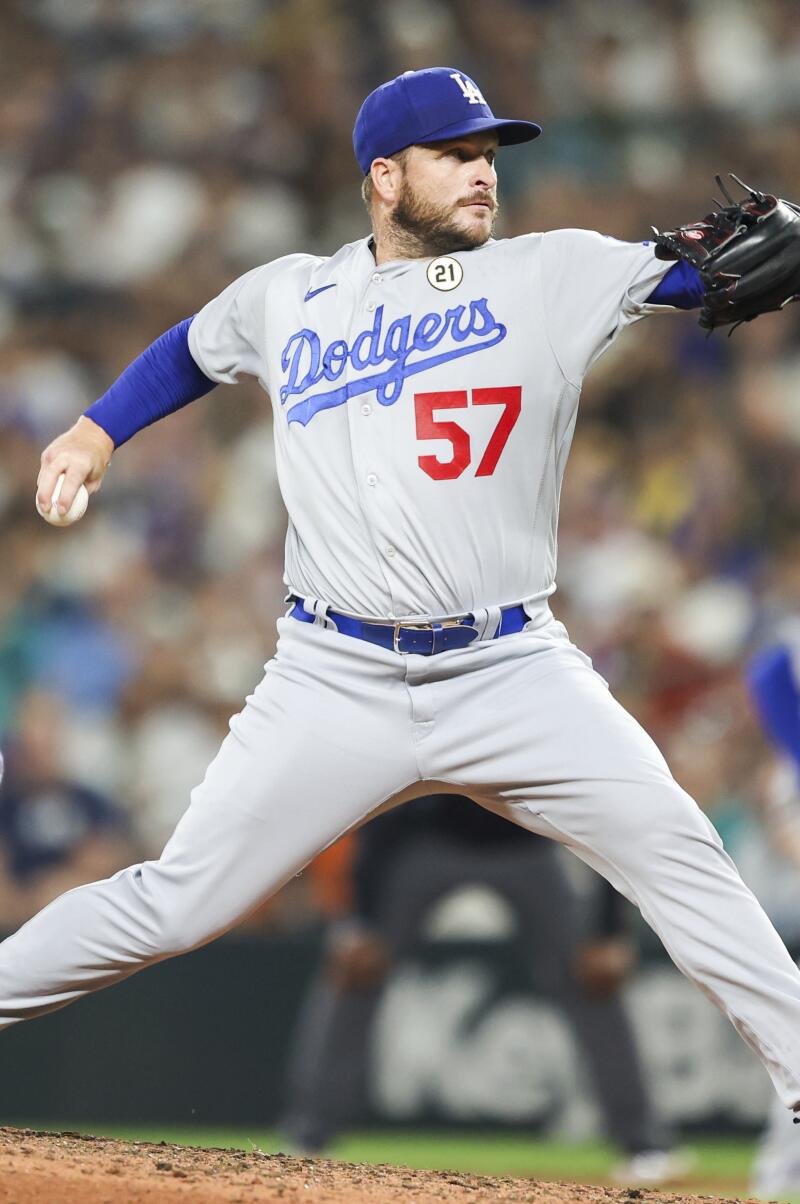
2
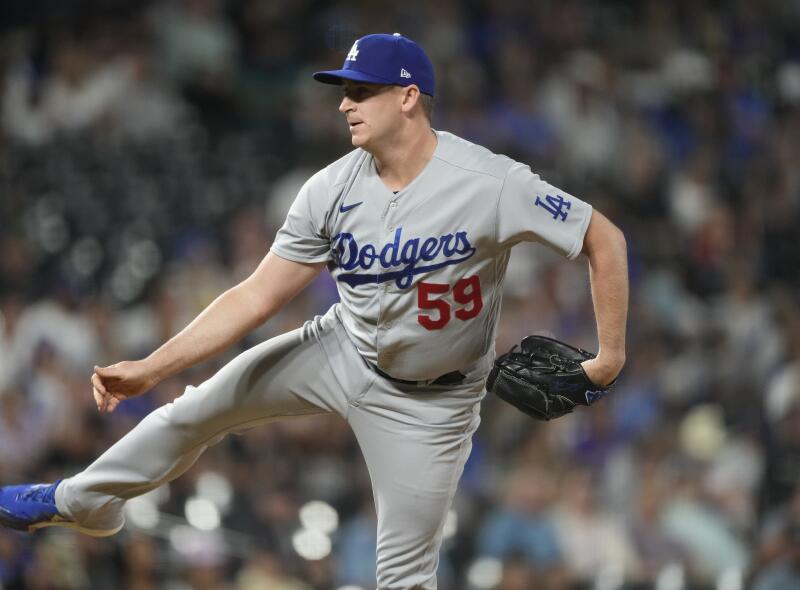
3
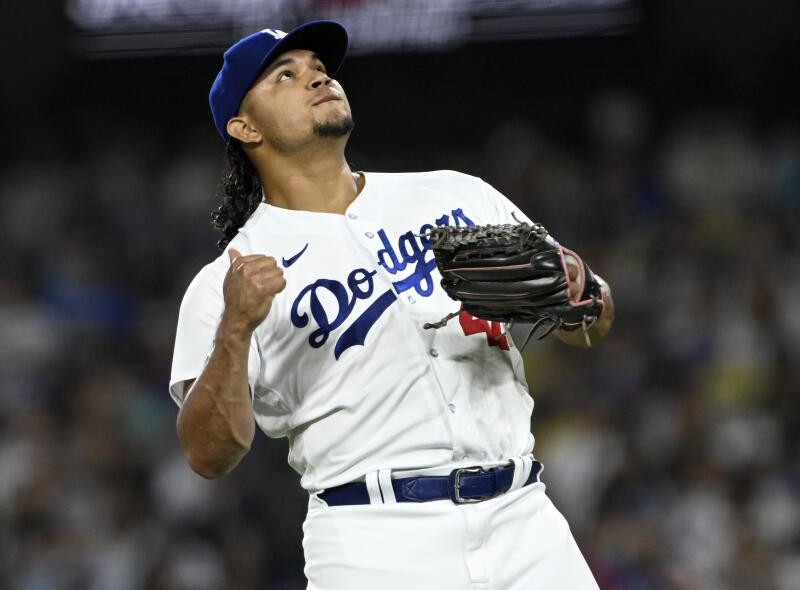
1. Dodgers relief pitchers Ryan Brasier (1), Evan Phillips (2) and Brusdar Graterol constitute the back end — and the strength — of a much improved bullpen. (Maddy Grassy, David Zalubowski, Alex Gallardo / Associated Press)
Every winnable game the Dodgers play should conclude with them taking down the final three innings. Building a bridge to get there will be the challenge.
While the Dodgers aren’t advertising their blueprint going into their best-of-five matchup against the Arizona Diamondbacks, it’s easy to guess what their top options will be.
Kershaw will be the Game 1 starter, an honor he earned with a 13-5 record and 2.46 ERA this year. But, the veteran left-hander has also been limited by shoulder troubles and diminished fastball velocity the last two months. And last week, manager Dave Roberts said the team won’t be expecting more than five innings and/or 80 pitches from the 35-year-old in the playoffs.
“I don’t think we need any more [than that],” Roberts said. “I think that’s something we feel is right where he needs to be going forward.”

That means, in Saturday’s NLDS opener, the Dodgers could need at least a couple of innings (and possibly more) from the middle of the bullpen. And if they’re looking to get creative from the jump, piggybacking a multi-inning bulk arm like Emmet Sheehan could offer an intriguing opportunity.
The night the Dodgers clinched the division on Sept. 16, Kershaw started with four scoreless innings. Then Sheehan, one of several rookie right-handers expected to be on the Dodgers playoff staff, followed with three shutout frames of his own.
The pairing excited Roberts, who noted that a high-velocity, lower-arm-slot righty such as Sheehan offered a drastically different look from Kershaw’s crafty left-handed arsenal.
“Internally, we understand that we have a lot of talented arms,” Roberts said. “And we get to choose when we deploy guys.”
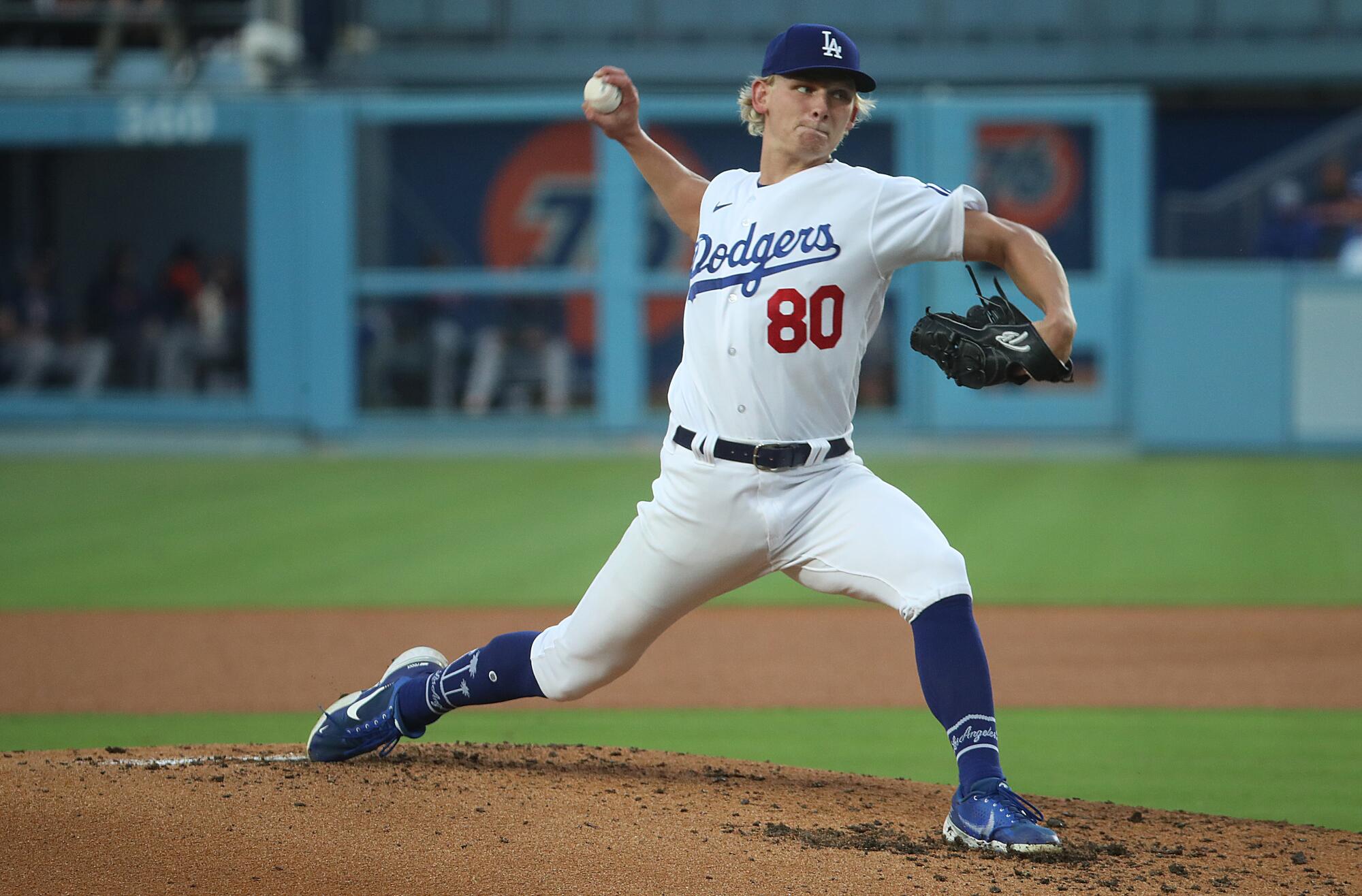
The Dodgers could also turn to their more traditional stable of middle relievers, headlined by Shelby Miller, Joe Kelly and lefty specialists like Caleb Ferguson or Alex Vesia.
That group could factor into the team’s Game 2 plan, as well, following the Dodgers’ most built-up starting pitcher in breakout rookie Bobby Miller.
“We’re gonna kind of piece it together,” Roberts said. “We’re gonna use all of our assets, our arms to win the first two games and see how we come out.”
It would help, obviously, if either Kershaw or Bobby Miller could go deep in their outings, providing the kind of workhorse effort that most teams require this time of year. (In the last decade, no club has won a pennant without getting at least two six-inning starts in the division and championship series.)
But Friedman downplayed such outings as absolute necessities — especially since the NLDS will feature an atypical off day between Games 1 and 2.
The Dodgers aren’t as talented as last season’s team that won 111 games. But they have the grit to do what the 2022 team couldn’t: win the ring.
“I think those off days are an advantage,” Friedman said. “We’ll figure out the best way to use that.”
Games 3 and 4 — the only games in the series, if it goes that long, to be played on consecutive days — will pose the greatest difficulties.
Veteran right-hander Lance Lynn and rookie righty Ryan Pepiot would, in some order, be the likeliest starters (or bulk pitchers) on those days. However, it’s possible both are limited to only one or two times through the batting order, leaving potentially two or three innings for the middle of the bullpen to yet again cover.
Both Shelby Miller and Michael Grove could be multi-inning options out of the bullpen. Sheehan and the middle relievers could be back available by then, too, if they weren’t overly taxed in the series’ first couple of games.
This is also the time the Dodgers could opt for an opener (Pepiot, in particular, seems like a bulk candidate after following an opener in three of his outings this year). Doing so, the team hopes, would further vary the pitching looks the D-backs’ best hitters would face each at-bat.
1
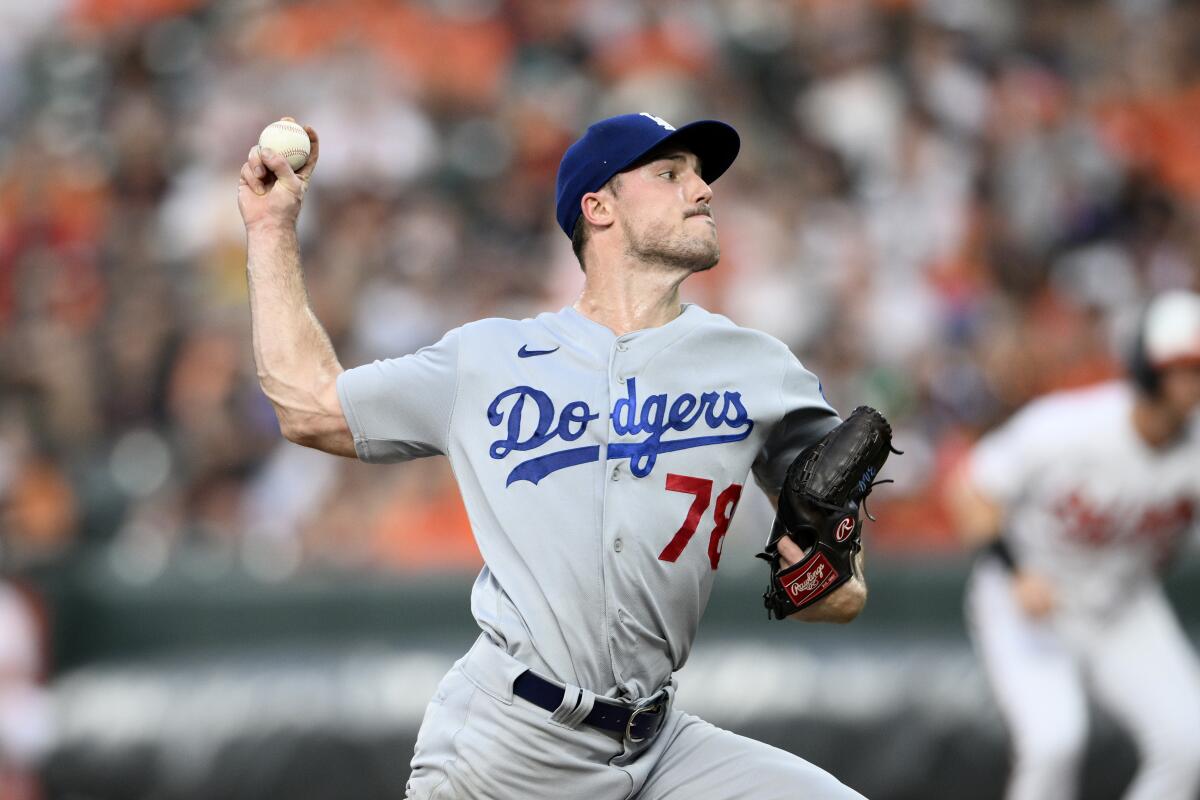
2
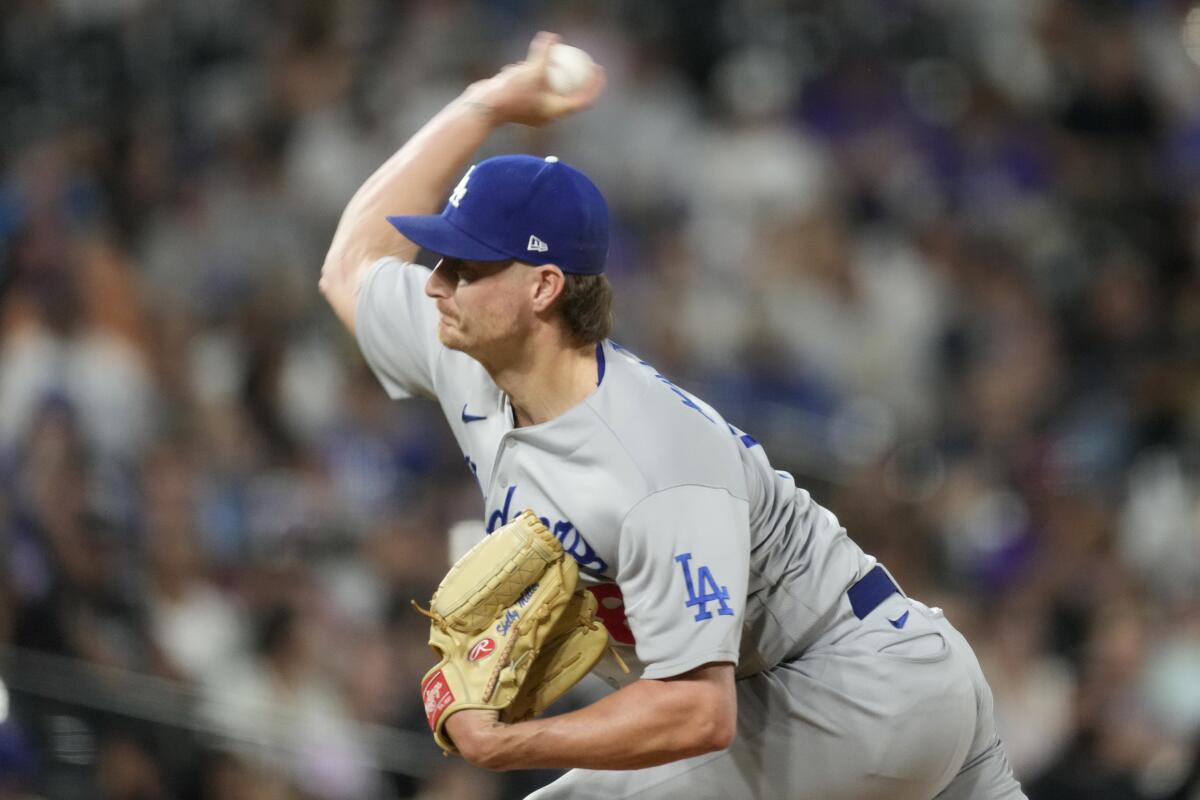
1. Dodgers pitchers Michael Grove (1) and Shelby Miller (2) could be leaned on to provide multiple innings of relief this postseason. (Nick Wass, David Zalubowski / Associated Press)
“If a pitcher is going to face less of the top three or four hitters in a lineup,” Roberts explained last week, “it gives them fundamentally a better chance.”
What is clear: The team will need production out of several arms, both days. That can be a tall task in October, especially for a rookie-reliant staff short on postseason experience.
But, given their lack of more established, conventional options, the Dodgers might feel they have no other choice.
“Overall this group has performed really well, especially down the stretch,” general manager Brandon Gomes said of a Dodgers pitching staff that ranked 13th in team ERA (4.06) for the whole season, but had the second-best mark (3.53) in the majors after the All-Star break.
“So,” Gomes added, “we’re excited to see these guys get out there and perform.”
The Dodgers won eight of 13 games against the Diamondbacks this season, but that might not mean much when the teams open a best-of-five series on Saturday.
The alternative path, of course, is for the Dodgers to treat their rotation members like actual starters nonetheless — and give Kershaw, Bobby Miller, Lynn and Pepiot the opportunity to spin five- or six-inning efforts, something they’ve all done on occasion this season.
If the Dodgers wanted, they could even shorten the rotation and have Kershaw start on normal four days’ rest for Game 4 (though Kershaw hasn’t done that since returning from the injured list in August).
“Kersh is the greatest competitor I’ve ever seen,” Friedman said. “It’s one of those things that, with all of our pitchers, after an outing we’ll assess and evaluate where guys are.”
Friedman, however, pushed back on the idea that a more traditional plan would be a safer bet for this year’s team.
“I mean there’s variance that comes with that, too,” he insisted. “We can attest to all sorts of outcomes and scenarios.”
The one thing not up for debate: The deeper the Dodgers go, the more difficult their pitching decisions will get — from a potential all-hands-on-deck situation in a winner-take-all Game 5 in the NLDS (a game that could center on Kershaw and Bobby Miller), to a best-of-seven NLCS that would include only two scheduled off days.
“I think no matter how it shakes out, we’re going to have a really talented pitching staff,” Friedman said. “We feel good about the talent, and feel good about how this group has come together.”
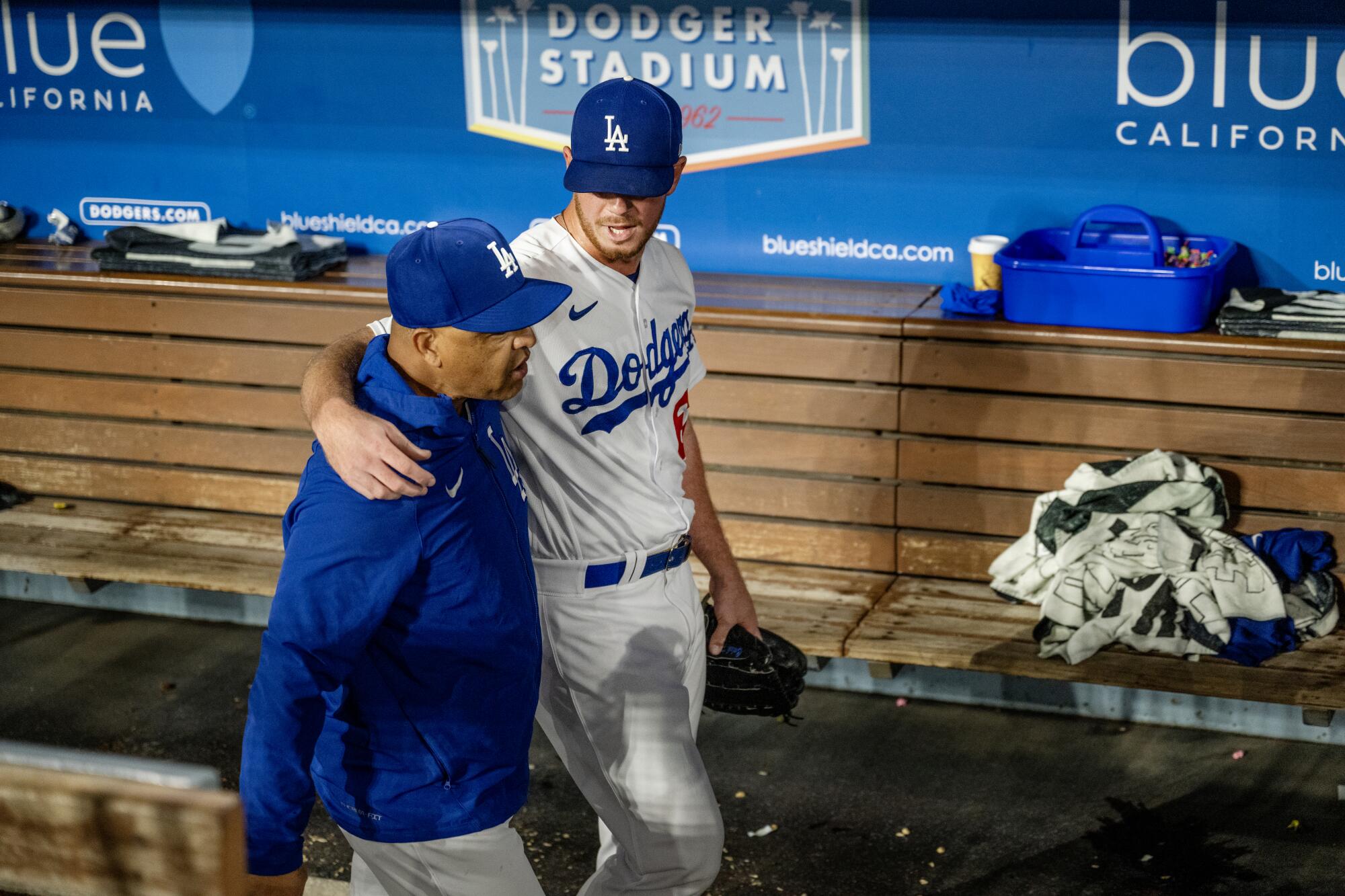
There are other key factors in the Dodgers’ playoff equation, too, including getting situational hitting from a star-studded lineup, dependable play from a recently improved defense and continued shutdown performances from their back-end relievers.
Their easiest route to wins might be out-slugging opponents early, then holding on with their late-game relievers at the end.
Still, the team must solve the first 18 outs of each game, too.
Do so, and this week might be the start of a surprise run through the playoffs.
Don’t, and the Dodgers will be in danger of meeting another early October exit.
More to Read
Are you a true-blue fan?
Get our Dodgers Dugout newsletter for insights, news and much more.
You may occasionally receive promotional content from the Los Angeles Times.


